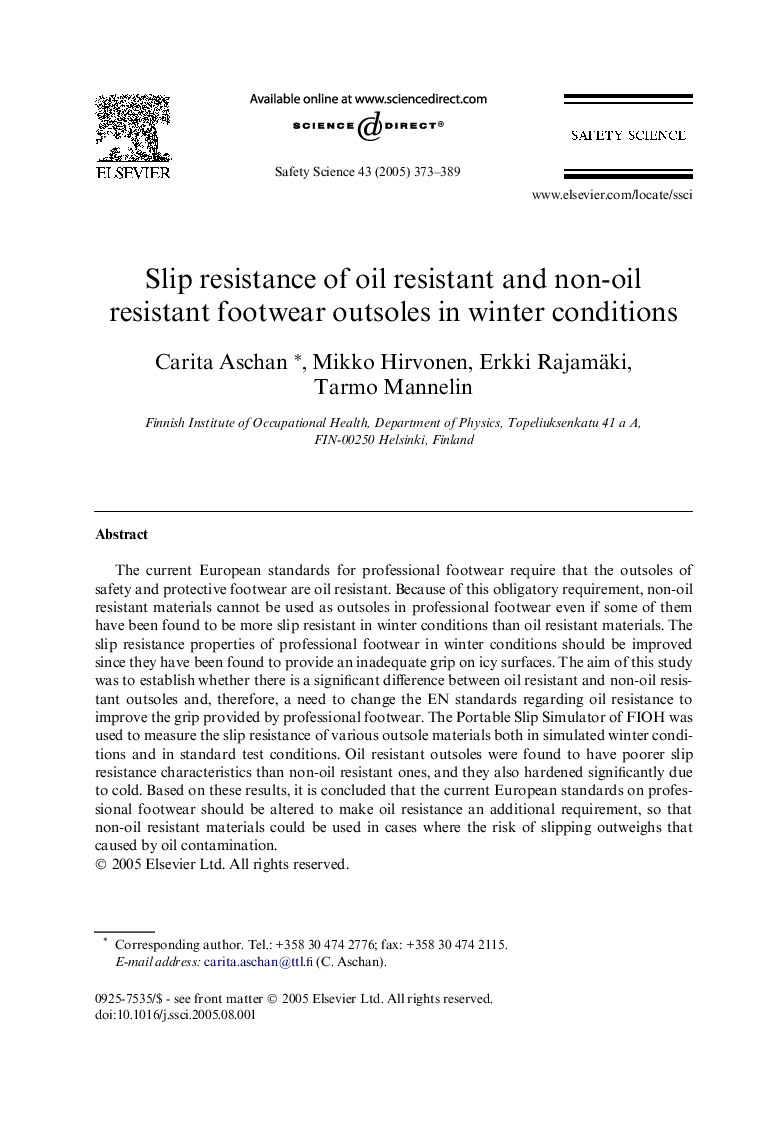| Article ID | Journal | Published Year | Pages | File Type |
|---|---|---|---|---|
| 10374360 | Safety Science | 2005 | 17 Pages |
Abstract
The current European standards for professional footwear require that the outsoles of safety and protective footwear are oil resistant. Because of this obligatory requirement, non-oil resistant materials cannot be used as outsoles in professional footwear even if some of them have been found to be more slip resistant in winter conditions than oil resistant materials. The slip resistance properties of professional footwear in winter conditions should be improved since they have been found to provide an inadequate grip on icy surfaces. The aim of this study was to establish whether there is a significant difference between oil resistant and non-oil resistant outsoles and, therefore, a need to change the EN standards regarding oil resistance to improve the grip provided by professional footwear. The Portable Slip Simulator of FIOH was used to measure the slip resistance of various outsole materials both in simulated winter conditions and in standard test conditions. Oil resistant outsoles were found to have poorer slip resistance characteristics than non-oil resistant ones, and they also hardened significantly due to cold. Based on these results, it is concluded that the current European standards on professional footwear should be altered to make oil resistance an additional requirement, so that non-oil resistant materials could be used in cases where the risk of slipping outweighs that caused by oil contamination.
Related Topics
Physical Sciences and Engineering
Chemical Engineering
Chemical Health and Safety
Authors
Carita Aschan, Mikko Hirvonen, Erkki Rajamäki, Tarmo Mannelin,
